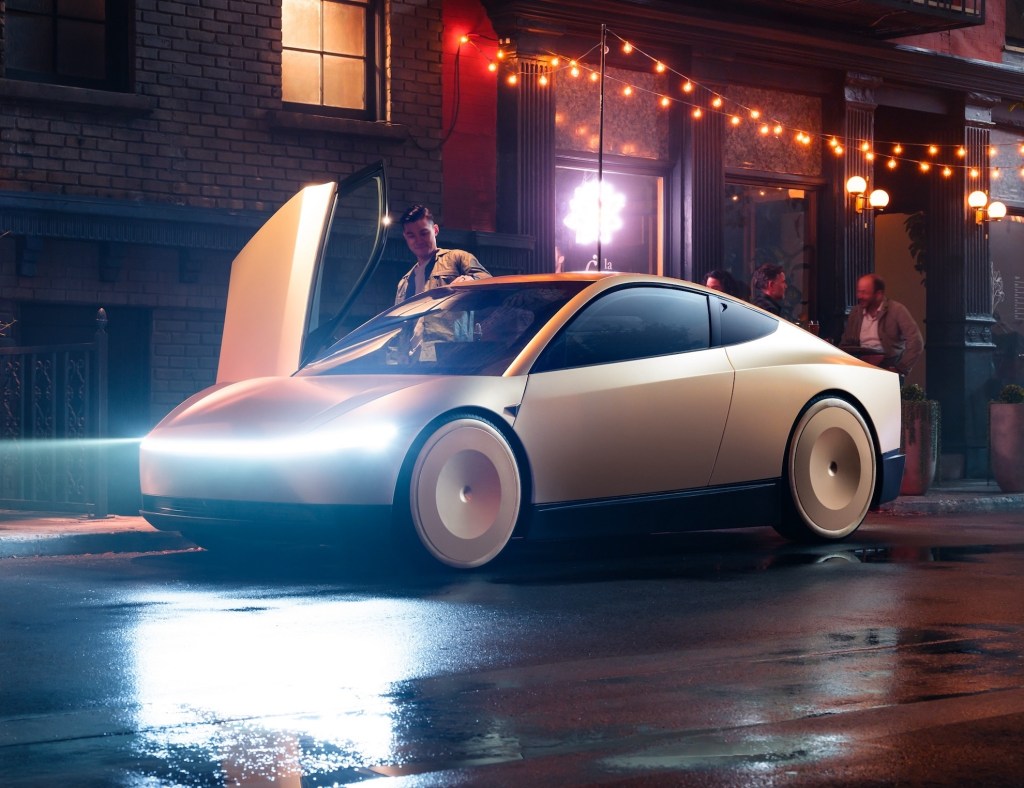Tesla’s Cybercab: Pioneering the Future of Autonomous Transportation
In a significant announcement during Tesla’s recent shareholder meeting, CEO Elon Musk revealed that the company is set to commence production of the Cybercab, an autonomous electric vehicle devoid of traditional controls like pedals and steering wheels, in April at its Austin, Texas facility. This development underscores Tesla’s commitment to revolutionizing urban mobility through innovative technology.
The Cybercab is designed exclusively for unsupervised, full self-driving capabilities, eliminating conventional driving interfaces to optimize cost-efficiency in autonomous operations. Musk emphasized the vehicle’s streamlined design, noting the absence of side mirrors to further enhance its aerodynamic profile. It’s very much optimized for the lowest cost-per-mile in an autonomous mode, Musk stated, highlighting the vehicle’s potential to transform the economics of ride-hailing services.
This announcement coincided with shareholders’ overwhelming approval of a compensation package for Musk, potentially valued at up to $1 trillion in company shares, marking a historic milestone in corporate remuneration.
However, Tesla’s journey toward fully autonomous vehicles has been marked by ambitious promises and subsequent delays. Despite years of development, the company has yet to demonstrate its cars’ ability to operate entirely without human oversight at scale. This reality brings Musk’s recent assertions into question, especially considering Tesla Chairwoman Robyn Denholm’s earlier comments suggesting that the Cybercab would include a steering wheel and pedals as a precautionary measure. The apparent discrepancy between Musk’s vision and Denholm’s statements reflects the complexities involved in achieving fully autonomous vehicle deployment.
Musk also detailed ambitious production plans for the Cybercab, claiming that the manufacturing line would achieve a 10-second cycle time, a significant acceleration compared to the one-minute cycle time for assembling a Model Y. This efficiency could enable Tesla to produce between 2 million to 3 million Cybercabs annually, positioning the vehicle as a ubiquitous presence in future urban landscapes.
The Cybercab was first introduced in October 2024 during Tesla’s We, Robot event at Warner Bros. Discovery studio in California, where the company showcased 20 prototypes. At that time, Musk projected that production would begin by 2026 or before 2027, with a target price of under $30,000, aiming to make autonomous transportation accessible to a broader audience.
Since the unveiling, Tesla has initiated a limited robotaxi service using Model Y SUVs equipped with an unsupervised version of its Full Self-Driving (FSD) software. These services, launched in June in select areas of Austin, operate with a Tesla employee in the passenger seat to monitor the vehicle’s performance, indicating a cautious approach to deploying autonomous technology.
The path to deploying vehicles like the Cybercab without standard equipment such as steering wheels and pedals involves navigating complex regulatory landscapes. Federal regulations currently mandate specific safety standards, including manual controls, which could pose challenges for Tesla’s plans. While companies like Amazon-backed Zoox have obtained exemptions for testing custom-built robotaxis on public roads, achieving full-scale commercial operation requires further regulatory approvals. General Motors’ experience with its Cruise Origin vehicle, which faced hurdles in obtaining necessary exemptions, exemplifies the potential challenges Tesla may encounter.
Despite these regulatory obstacles, Musk remains optimistic about the Cybercab’s deployment. He expressed confidence that widespread adoption in urban areas would eventually lead regulators to approve the vehicles, stating, Once it becomes like, extremely normal in cities, it’s just going to become like… the regulators will have just fewer and fewer reasons to say no.
Tesla’s ambitious plans for the Cybercab are part of a broader strategy to lead the autonomous vehicle market. The company’s focus on developing vehicles without traditional controls aligns with its vision of a future dominated by self-driving technology. However, the success of this endeavor will depend on Tesla’s ability to overcome technical challenges, gain regulatory approval, and build public trust in autonomous transportation.
As Tesla prepares to embark on this new chapter, the automotive industry and consumers alike will be watching closely to see if the company can deliver on its promises and redefine the future of mobility.



